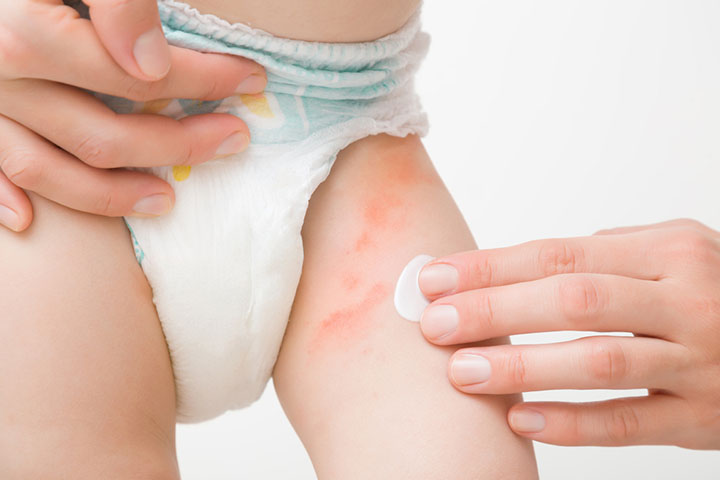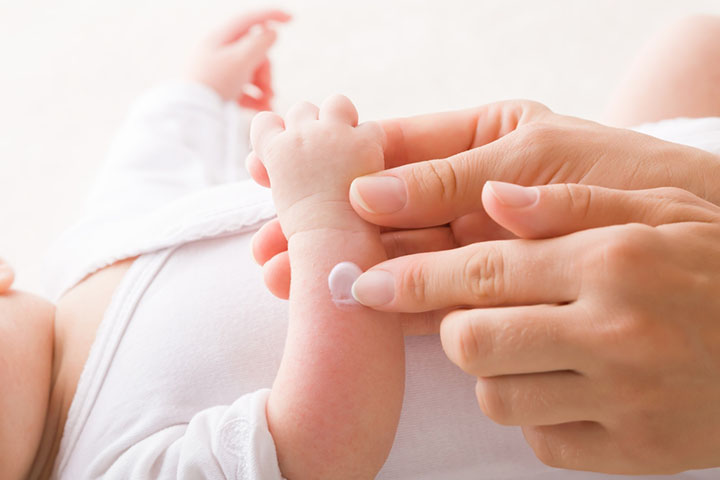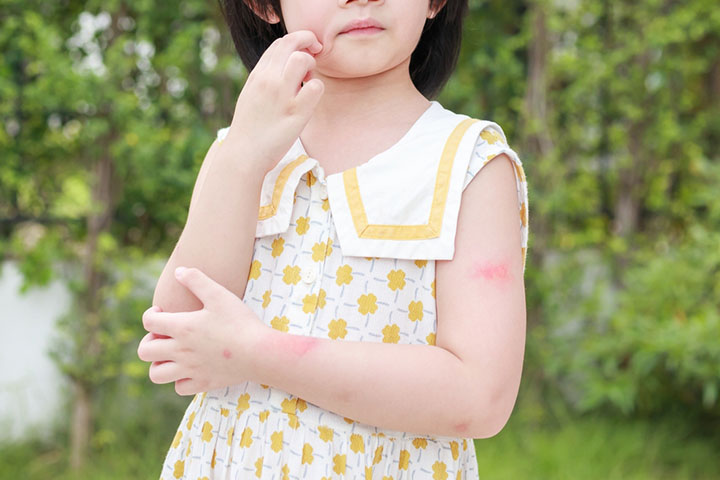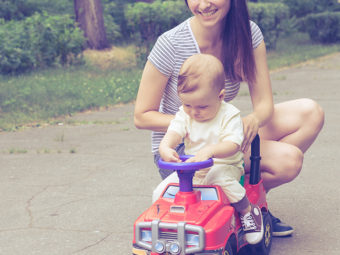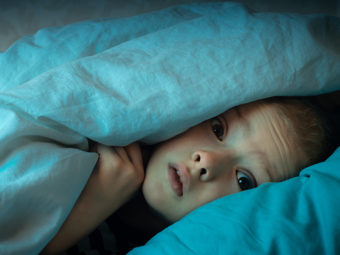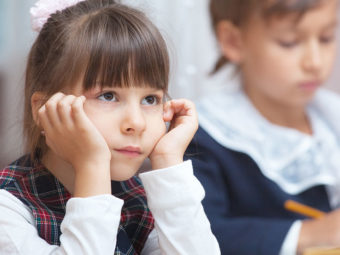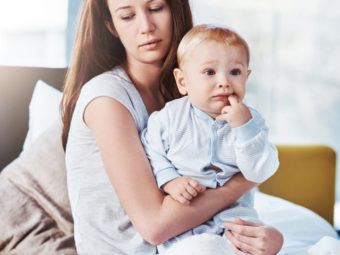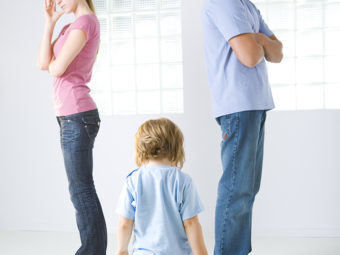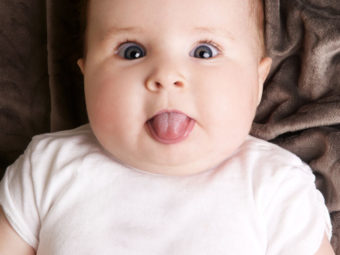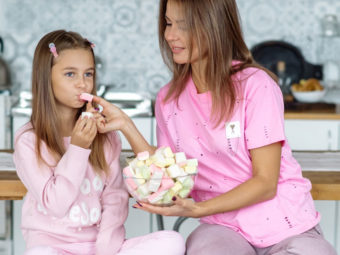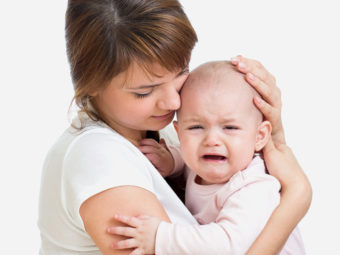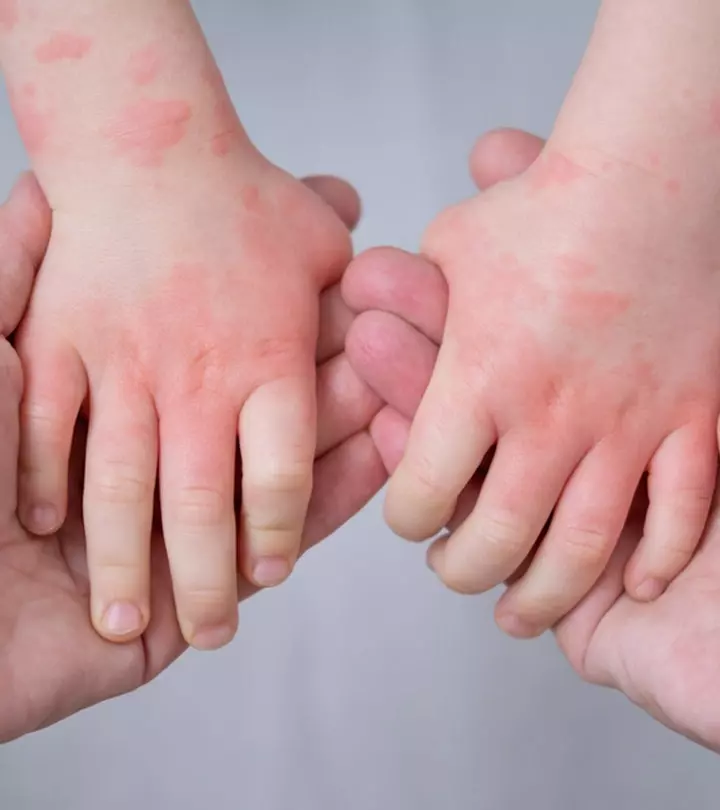
Image: Shutterstock
Babies are incredibly delicate and prone to various illnesses and rashes as they grow into toddlers and children. When you notice a concerning red mark on your child’s skin, there’s no need to panic. Most childhood rashes are both treatable and temporary. However, it’s crucial for parents to be vigilant, promptly seek medical assistance when necessary, and familiarize themselves with common childhood rashes. Having this knowledge will help you stay composed while caring for your uncomfortable, irritable child until they recover. Here are some typical childhood rashes to be aware of. Continue reading to learn more!
1. Milia Or Blocked Oil Glands
These rashes don’t come with a fever or itching, and they’re not contagious. They are essentially clogged pores, typically resolving with appropriate treatment within a couple of weeks. White spots on a baby’s face, particularly the nose, are prevalent, with up to 1 in 2 babies experiencing them, making them extremely common. There’s no need for long-term concern (1).
2. Nappy Rash
Image: Shutterstock
Every baby is susceptible to developing a diaper rash at some point, regardless of how cautious you are. A diaper rash is essentially skin inflammation in the diaper area, typically appearing as red, patchy, sore, and inflamed skin that can cause your baby discomfort (2). These rashes are primarily triggered by the irritation from urine and feces.
To prevent this, parents should take extra care to maintain a clean and dry diaper area by changing diapers frequently. Allowing your baby some diaper-free time is also essential. Additionally, you can protect your baby’s delicate skin by applying a barrier cream like zinc or soft white paraffin at each diaper change. Avoid using talcum powder or antiseptic cream to treat diaper rashes, as these may worsen your baby’s sensitive skin.
3. Tinea Or Ringworm
Image: Shutterstock
Although it may seem worrisome, ringworm is a treatable condition. It’s a common infection that can lead to significant itching and discomfort, characterized by ring-shaped, red rashes with a white center.
It’s important to note that ringworm is not caused by an actual worm but by a fungus that your baby may have come into contact with (3). Typically, it is treated with antifungal cream. If your child has ringworm, it’s crucial to keep them at home and away from childcare or school until the day after you’ve commenced treatment to prevent the spread of this infection.
4. Heat Rash
This is another common rash that kids deal with. If your baby has been subjected to hot humid weather, they might get red bumps or blisters on the skin because of it. And these jumps can be really itchy! The best way to treat these rashes is to cool your baby down as soon as possible and keep them away from humidity. This rash will thankfully clear up in 2 to 3 days without any medical treatment. Just make sure your child is well hydrated and in a cool environment.
5. Impetigo Or School Sores
Image: Shutterstock
This is a rash that demands close attention. Impetigo is a highly contagious bacterial skin infection, characterized by red sores and blisters that develop a yellow crust. While it is quite common among children aged 2 to 6, it is generally not severe in this age group (4). However, if a newborn baby contracts Impetigo, it can be dangerous. To prevent the spread of this infection to other children, keep your child at home and away from childcare or school until their sores have dried up. This typically only takes a few days after starting the treatment.
6. Roseola Infantum
This particular rash is a contagious viral infection that can cause cold-like symptoms and high fever. This high fever can last for a few days even after treatment begins. Roseola Infantum can also cause some children to have a febrile convulsion or a seizure, so they need to be taken to the emergency room immediately (5).
Preventing rashes in children involves a comprehensive approach to safeguarding their skin health. This includes maintaining cleanliness and dryness by using mild soaps and patting the skin dry after baths. For diaper care, frequent changes and the use of gentle, fragrance-free wipes, along with the application of a barrier cream, help prevent diaper rash. Choose loose-fitting, breathable clothing and opt for natural fabrics like cotton to reduce friction and allow the skin to breathe. Ensure that laundry detergents are hypoallergenic and moisturize your child’s skin, particularly in dry or cold conditions. Be cautious of potential allergens, and protect your child from sun exposure with appropriate clothing and sunscreen to prevent sunburn and related rashes. Taking these steps can significantly reduce the risk of rashes and skin irritations in children. Your kids are fragile and can be susceptible to infection and rashes from time to time. However, this is not the end of the world or a reason to panic. Most childhood rashes are treatable and can be cured in a couple of weeks. So, make sure you stay calm and keep an eye on your kids. They’ll be healthy and fit in no time!

